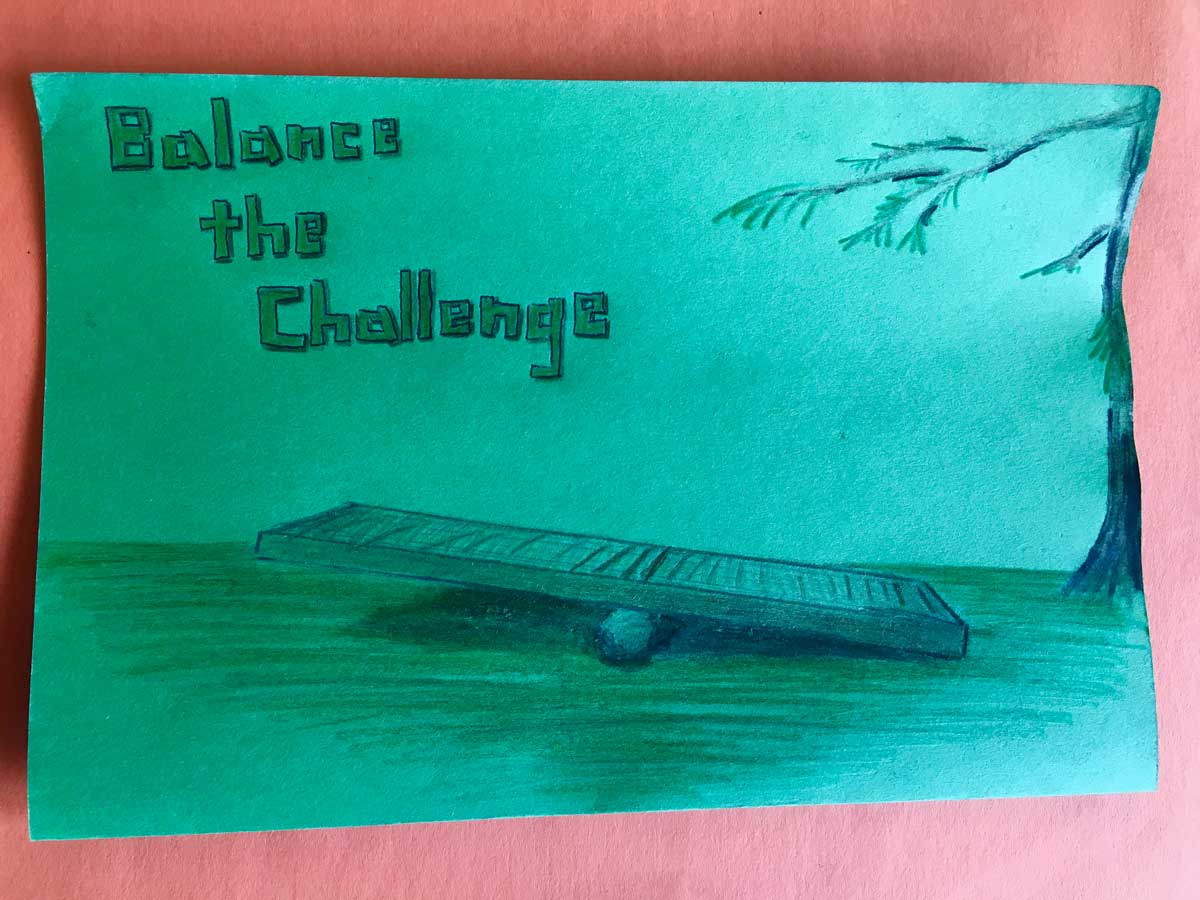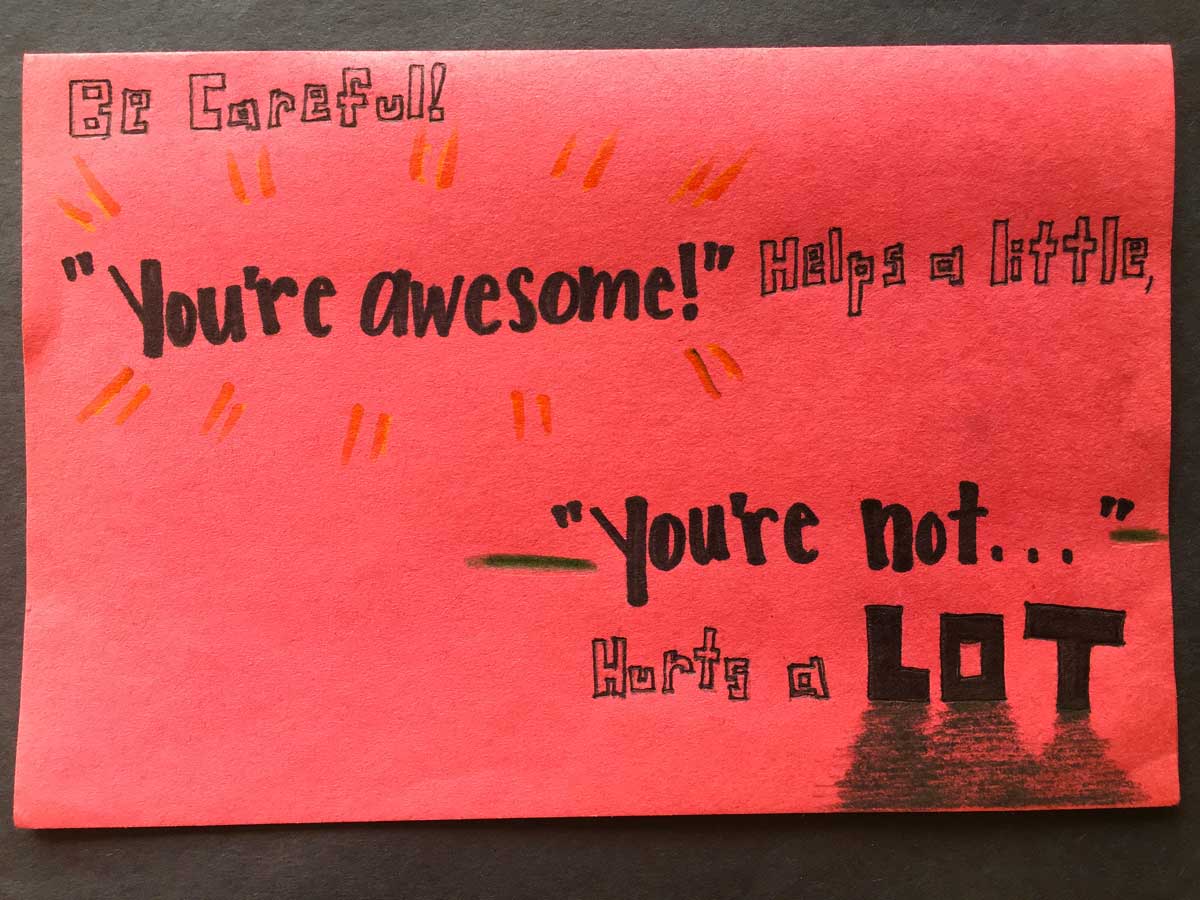“Why on Earth do you think,” I love to ask of students, “do we solve team puzzles at Science School?”
There is no right answer. Their answers run the gamut. “To know how to communicate without talking!” and “To study simple machines!” they suggest, or “Because it’s…fun…maybe?” I tell them they are all correct. Personally, I love the Adventure Course, a maze of low-ropes team-building puzzles scattered in the surrounding forest for many reasons. My favorite answer to the question is self-efficacy, which is a dense concept, I admit. Still, self-efficacy is so integral to a student’s sense of worth and ability that I believe it deserves examination.

Self-efficacy is a person’s beliefs about her own ability and power to meet challenges in life; beliefs which color one’s feelings, thoughts, and efforts in the face of difficulty. Albert Bandura, a developmental psychologist, outlines four ways that experiences can either reinforce positive self-efficacy or damage it. 1 In this blog post I explore how the Adventure Course supports positive student self-efficacy and how we, as instructors, can do more to head off student experiences that might undermine their self-confidence.
Mastery Experience
Mastery Experience is Bandura’s first and most effective source of positive self-efficacy. A mastery experience is an achievement that comes after perseverance and repeated effort. The Adventure Course is tailored to provide students with just this type of experience. From simpler puzzles, such as the Shrinking Island, to more complex or involved obstacles like the A-Frame, the Adventure Course activities are possible to achieve though they require sustained and repeated efforts to complete. This is exactly what we facilitate! Still, Bandura warns that some experiences may undermine the mastery effect. Challenges that are too easy do not provoke the same improvement. Also, failures can undermine positive self-efficacy, especially if individuals are still developing beliefs about their abilities.
As instructors we have the power to frame student experiences and we should take care to guard against detrimental experiential possibilities. Specifically, we should allow time for groups to fully complete puzzles and we should pick (or let students pick) objectives that are within the grasp of a given group. This way we do not cut their successes short nor underwhelm them with rudimentary challenges. If we guard against the “That was too easy!” and “We are never going to get this!” responses, then we can increase the chances that students will walk away with improved beliefs about their abilities.

Vicarious Accomplishment
Second, Bandura suggests that Vicarious Accomplishment is the next best means of bolstering student confidence. Bandura argues that when we observe a peer, someone who we relate to, achieve something by sustained effort, then our confidence in our own ability can improve. The phenomenon is stronger the more that we relate to that person. Additionally, Bandura insists that we pick models who are successful at the skills we aspire to ourselves and that we learn from others as we watch them work toward success.
In the Adventure Course, we utilize this effect when we emphasize team success over individual success. We encourage every student to see the revelations, feats, and victories of the team as their own. We also highlight the role of communication within teams by asking students to examine their personal strategies and modes of communication so that the entire team may learn from them. Ideally, the team-centered nature of the Adventure Course can harness the effects of vicarious accomplishments to improve the self-efficacy, of every member of the team.

There is risk, however, that vicarious experience can harm a student’s belief in their ability if they relate to another student as they fail after sustained effort. “If Susan can do it then so can I!” is something I commonly hear from students. Unfortunately, so is the refrain “Well if Billy can’t do it, then I never will.” Once again, as instructors, we can make this mechanism work for us. We can harness the positive features of vicarious accomplishment by emphasizing team unity to promote the perception of student sameness. This is another reason that we should simultaneously guard against failure by allowing time for students to get through a challenge and avoid obstacles that are too easy.
Social Persuasion
The third mechanism that Bandura describes is Social Persuasion. Unsurprisingly, learners who receive verbal persuasion that they can do something are more likely to exert themselves and redouble efforts when first attempts are unsuccessful. As leaders, caregivers, and figures of both authority and knowledge, we instructors have a tremendous amount of social capital. We are well-served to spend it on our students and Adventure Course is the perfect avenue for supporting students’ general sense of ability. Once again, however, Bandura cautions those of us who would try to cultivate positive efficacy in others. “It is more difficult to instill high beliefs of personal efficacy by social persuasion alone than to undermine it,” he cautions. This means that we can do a little bit of good with verbal support and a lot of damage with verbal put-downs. How do we confront this dynamic?

At High Trails, specifically on the Adventure Course and all of Adventure Day, we forbid cruel criticism. Instead we encourage students to consider their tone, words, and timing to promote constructive and clear communication. Bandura captures a great deal of what we strive to do on the Adventure Course,
Successful efficacy builders do more than convey positive appraisals. In addition to raising people’s beliefs in their capabilities, they structure situations for them in ways that bring success and avoid placing people in situations prematurely where they are likely to fail often. They measure success in terms of self-improvement rather than by triumphs over others.
I think every instructor here at High Trails strives to be one of those “successful efficacy builders.”
Somatic-Emotional Feedback
Bandura’s fourth method of supporting positive self-efficacy is, simply-put, positively framing what your body is doing and how you feel about it. A person of high self-efficacy is likely to interpret heavy breathing, aching muscles, and quickening heart rate as evidence that they are performing and doing the right thing. Inversely, a person of low self-efficacy may interpret those same sensations as evidence that they are unfit for the task. Similarly, learners who have a generally positive disposition are more likely to strive and experience a boost to self-efficacy when challenged, whereas a grumpy student is more likely to quit and less likely to see themselves as capable. We can do a great deal to make these effects work for us and for students.
By taking care to keep students hydrated, well-fed, and happy we can set students up with a positive outlook and a well-functioning body when they do engage a challenge. I go out of my way to frame the physical experiences of students. “If your hands hurt that means that you’re doing it right!” Ultimately, each of these four methods reinforce one another. The more students relate to you, trust you, believe you, see you as a role model, and trust you to have reasons for your choices, the more they feel good, feel safe, and welcome your affirmations. Each of these mechanisms have a place in the Adventure Course and make it more likely that students will emerge from their adventure with an improved sense of their own abilities. As instructors we can understand and harness the dynamics of Mastery, Vicarious Experience, Social Persuasion, and Somatic-Emotional effects to help students believe in themselves. So, what does self-efficacy have to do with Science School anyway?

A person with strong self-efficacy will see a difficulty as challenge, as something to be overcome, instead of a threat that we ought to avoid. Does that sound familiar? We challenge students to take a long look at our changing and fragile habitat. A person who has positive beliefs about her ability is more likely to accept her part in a failure while a person with low efficacy is likely to attribute failure to something outside their control and responsibility. Self-efficacy helps people set and commit to goals, endure stress, and get back up after setbacks. We need good humans as well as good scientists. By supporting student confidence we enable them to engage with the complex environmental concepts and landscapes that we explore with them here at High Trails. No matter what our students pursue after they leave High Trails, a strong belief in their personal power will serve them and the communities they belong to.

At High Trails Outdoor Science School, we literally force our instructors to write about elementary outdoor education, teaching outside, learning outside, our dirty classroom (the forest…gosh), environmental science, outdoor science, and all other tree hugging student and kid loving things that keep us engaged, passionate, driven, loving our job, digging our life, and spreading the word to anyone whose attention we can hold for long enough to actually make it through reading this entire sentence. Whew…. www.dirtyclassroom.com
- Bandura, A. (1994). Self-efficacy. In V. S. Ramachaudran (Ed.), Encyclopedia of human behavior (Vol. 4, pp. 71-81). New York: Academic Press. (Reprinted in H. Friedman (Ed)., Encyclopedia of mental health. San Diego: Academic Press, 1998). ↩

Comments are closed.